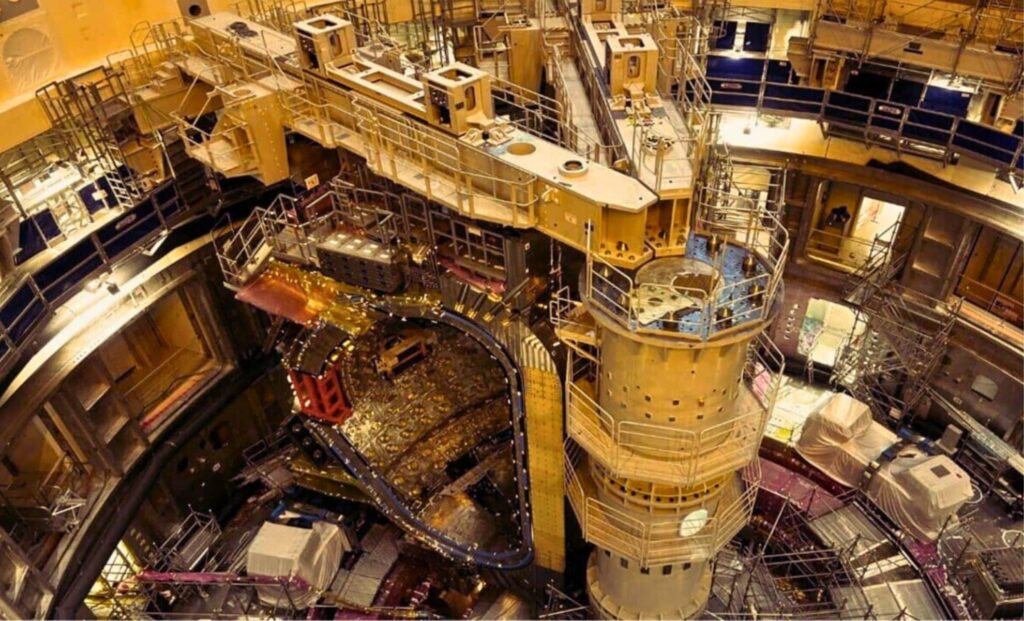In the hills of Provence, far from the political swirl of Paris or Brussels, something quietly monumental is taking shape. Behind layers of reinforced concrete and dense security, a multinational team of engineers is assembling a device that could change the global energy equation. It’s called ITER, short for International Thermonuclear Experimental Reactor—and it is, by every measure, one of the most complex machines humanity has ever tried to build.
Supported by 35 countries, including the United States, China, India, and members of the European Union, ITER represents a rare fusion—both literal and metaphorical—of science, diplomacy, and sheer industrial ambition. Its goal is as lofty as it is elusive: to recreate the energy of the sun on Earth by controlling nuclear fusion, the process that powers stars. Unlike nuclear fission, fusion produces no long-lived radioactive waste, no greenhouse gases, and carries no risk of catastrophic meltdown.
But promise and reality remain far apart. Originally slated to begin plasma experiments in 2018, the project has faced repeated delays, budget revisions, and shifting political tides. As of 2025, ITER is still at least a decade away from full operation. Yet for the scientists and engineers working on site, hope has never been higher—or the pressure greater.

This summer marked a decisive turn. The vacuum vessel, ITER’s central fusion chamber, has begun final assembly. If this step succeeds, it will move fusion energy from theoretical to tangible—a machine not just dreamed about, but welded together, bolt by bolt.
A Machine Unlike Any Other
The core of ITER is a tokamak, a Russian acronym for a toroidal (doughnut-shaped) chamber surrounded by magnetic coils. Within this vessel, hydrogen atoms—superheated to 150 million degrees Celsius, ten times hotter than the Sun’s core—will collide and fuse, releasing energy in the form of heat. That heat won’t generate electricity at ITER (that’s for a future plant, DEMO), but it will demonstrate whether sustained fusion at power-plant scale is possible.
The current phase involves welding together nine massive steel sectors, each weighing over 400 tonnes, with millimetric precision. These were manufactured in South Korea and Europe, shipped across continents, and now must form a seamless ring around the plasma zone. Any deviation, even a few millimeters, could make plasma containment impossible. In a fusion device, touching the chamber walls is not just a design flaw—it’s mission failure.


“Fusion doesn’t forgive engineering errors,” said Bernard Bigot, the late director-general of ITER, in one of his last public addresses. “There’s no room for trial and error once you begin assembly.”
Science Across Borders
ITER is sometimes called a “nuclear United Nations”, a phrase that’s only half-joking. Every component—superconducting magnets from the U.S., cooling systems from India, diagnostics from Japan—must integrate flawlessly. In total, over one million parts are being manufactured across the globe and shipped to a single site in southern France, a logistical feat that rivals space missions in complexity.
Even the magnets are extraordinary. ITER’s central solenoid, an electromagnetic structure taller than a five-story building, will generate magnetic forces of 60 meganewtons—equivalent to twice the thrust of a space shuttle at launch. To handle those forces, engineers had to create one of the most mechanically resilient structures ever built.
For many of those involved, the project’s collaborative nature is its greatest asset—and its greatest risk. National delays, export restrictions, or political tensions can ripple through the entire effort. Yet, despite geopolitical headwinds, ITER’s momentum has held. Over $22 billion has already been invested, and more than 5,000 people now work across the site.
The Path to Power
If successful, ITER would not produce electricity directly, but it would prove the viability of fusion for power generation. Its stated goal is to generate 500 megawatts of thermal power from just 50 megawatts of input—a tenfold energy gain (Q = 10), a landmark no fusion reactor has ever achieved. By comparison, the current record holder, JET, managed a Q of just 0.67.
What comes after is already in planning. The European Union and Japan have begun early-stage designs for DEMO, a demonstration fusion power plant expected to begin operation in the 2040s. If ITER works, DEMO will close the loop—converting fusion heat into electricity and delivering it to the grid.
The stakes are high. According to the International Energy Agency (IEA), global electricity demand is expected to grow by more than 60% by 2050, with renewables meeting only part of the load. Fusion, with its near-limitless fuel (deuterium from seawater and lithium), could fill a critical gap—if it works in time.
A Decades-Long Bet on Physics
Critics argue that ITER’s timeline is too long, its costs too high, and its payoff too uncertain. Private fusion startups, like Commonwealth Fusion Systems and TAE Technologies, claim they can beat ITER to the punch using smaller, more agile designs. But none have yet demonstrated sustained net energy gain. For now, ITER remains the world’s best-funded and most advanced fusion project—and the closest to ignition.
In July 2024, ITER’s management published a baseline update, outlining a revised timeline that targets deuterium-tritium operation by 2039. The roadmap is slow, but methodical. For the first time in decades, the dream of fusion energy feels less like science fiction—and more like an engineering problem.

